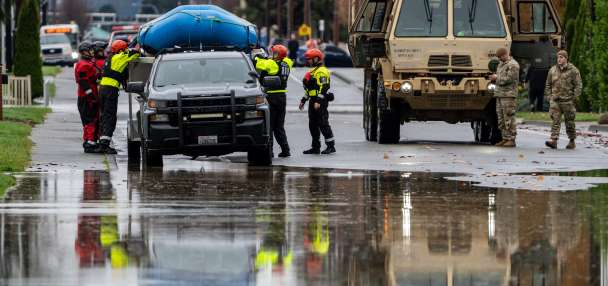Estimated read time: 4-5 minutes
- Utah's new wildfire report emphasizes continuous readiness and coordination between agencies.
- The report highlights the need for stable state funding and reduced federal dependency.
- Public education, prevention and proactive management are key to mitigating wildfire risks.
SALT LAKE CITY — Utah needs a combination of ongoing wildfire prevention education, funding for various projects and "seamless coordination" between agencies to help combat the threat of "large, catastrophic fires" in the state.
Those are some of the findings of a new state wildfire preparedness report that Gov. Spencer Cox requested through an executive order earlier this year. The 28-page document, made public on Wednesday, outlines Utah's risks and ways to combat them as above-normal fire potential returns to some parts of the state.
There's also an "urgent need for proactive, sustained and collaborative funding and actions" to handle the situation, its authors — a mix of state public safety and public land leaders — concluded.
"Utah's wildfire season now extends year-round, demanding continuous readiness," they wrote. "While 93% of fires were contained at 10 acres or less, large, catastrophic fires remain a significant concern, threatening water quality, soil, air, safety and economic stability."
About 70% of the state remains in drought, including nearly half of the state in severe drought or worse, according to the U.S. Drought Monitor. Storms this week have helped some of the driest parts of the state, but the report points out that decades of drought and fire suppression have also created "excess flammable vegetation," which requires "extensive treatments."
Combatting the risk starts with public education and coordinated wildland management, the report adds.
Utah launched its "Fire Sense" campaign during the middle of extreme drought conditions in 2021, a year after a record 78% of fires were human-caused. The percentage of human-caused fires has dropped significantly, helping the campaign to win a national award for its successes.
Yet, the report warns that the number of human-caused fires is still too high, requiring "continued education." Although last year's wildfire season was relatively mild, burning a little over 90,000 acres, 57% of the state's 1,244 fires were determined to be human-caused.
Related:
Funding is another major concern when it comes to management. Cox said the state would be "staffed up" when asked about federal firefighters in the state during a Fire Sense event last month, adding that Utah's delegation was working to have the funding for resources, personnel and supplies needed this summer.
But the report outlines potential problems. The state, it says, has a "heavy reliance" on federal funding when it comes to controlled burns, mitigation to wildland urban interface threats and other preventative measures, as well as fighting active fires. Possible budget cuts to federal agencies and programs could "jeopardize critical efforts and personnel," the state report warns.
"Many (state) operational firefighting resources are self-funded, forcing them to seek billable activities out-of-state, limiting availability for Utah's priorities. This dependence on federal funding and billable work creates fiscal vulnerability, diminishing Utah's strategic autonomy and making planning reactive," the group wrote.
The report recommends several tactics, including:
- The creation of "consistent, unified messaging" across different agencies to address the ongoing threat of human-caused fires, as well as prevention, preparedness and evacuation education. The state could also explore tax credits or other financial incentives to help private homeowners create defensible space, while ensuring defensible spaces are created outside public buildings.
- The creation of "stable" state funding for firefighting operations to "strategically reduce" the state's reliance on federal funding for "core forestry and fire program positions." The state should also ensure that firefighter pay and benefits remain "competitive," while also investing in "solutions for early wildfire detection." A better system to identify the availability of local wildfire resources is also recommended.
- On top of firefighting efforts, the state should also dedicate more state funding for wildfire mitigation programs. The report also says there should be "seamless coordination" across land management agencies and private land owners since wildfires often cross different boundaries.
The report was compiled by several state agency heads, including Utah Department of Natural Resources Director Joel Ferry, Utah Division of Forestry, Fire and State Lands Director Jamie Barnes and Utah Department of Public Safety Director Jess Anderson.
Cox requested it to improve wildfire management coordination between fire management agencies because of the state's dry conditions before the normal fire season. It was also inspired by the devastating fires that ravaged California in January, which killed at least 30 people and destroyed more than 16,000 structures.
"It's lessons learned from California," the governor explained last month, adding that he wanted a report that addressed scenarios that go "above and beyond" the state's typical fire concerns.
"It really is, 'Hey, let's look at everything; let's imagine the worst-case scenario,' and prepare for that," he added at the time.
The fires also inspired a few legislative changes this year, including a bill that requires counties and cities to "adopt the wildland urban interface building code standards." Utah also became the latest state to join the Great Plains Interstate Fire Compact to help bolster firefighting resources.











